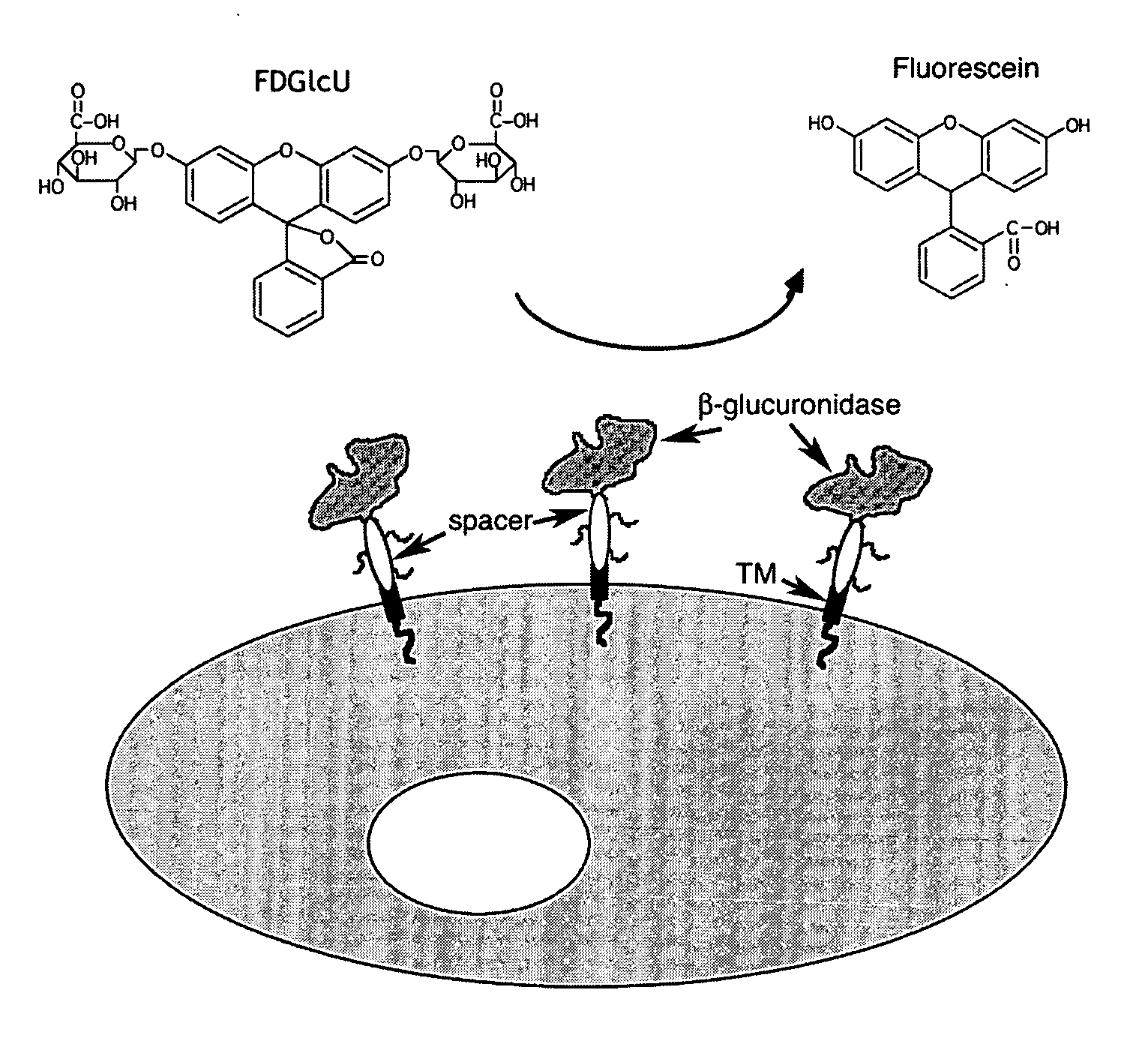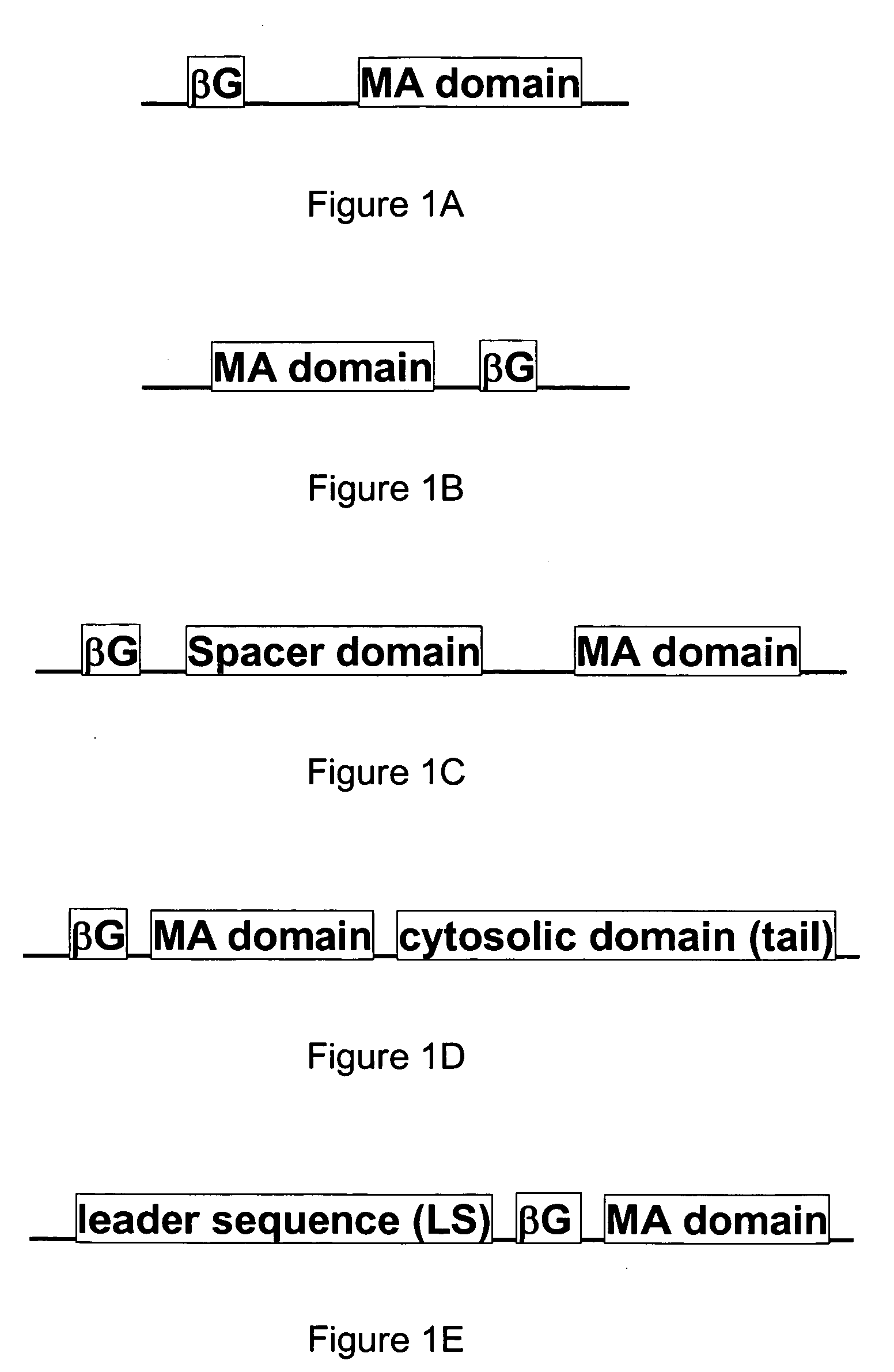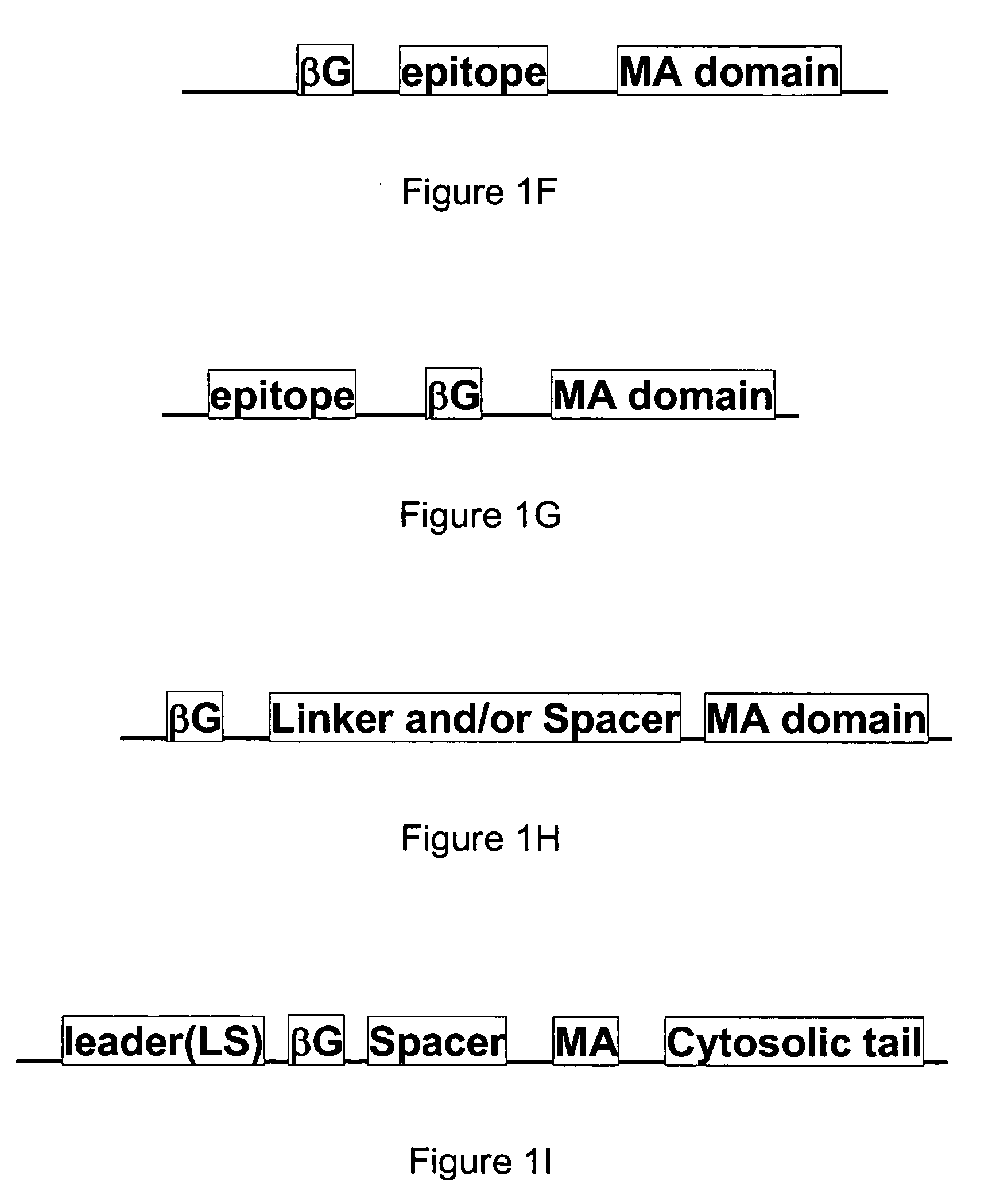Membrane bound reporter gene system
a reporter gene and membrane bound technology, applied in the field of membrane bound reporter gene system, can solve the problems of endogenous reporter genes, tissue damage, and limit persistent gene expression and imaging
- Summary
- Abstract
- Description
- Claims
- Application Information
AI Technical Summary
Benefits of technology
Problems solved by technology
Method used
Image
Examples
example 1
Recombinant Reporter Gene Systems Having β-Glucuronidase Linked to Mouse B7 Extracellular Domain
[0109]The enzymatic activity of β-glucuronidase has been examined by β-glucuronidase microassay in 0.1% BSA / phosphate-buffered saline using recombinant reporter gene constructs having β-glucuronidase (βG) linked to mouse B7 extracellular domain. The mouse B7 extracellular domain allowed high activity of human and mouse β-glucuronidase to be expressed on cells, demonstrating efficient translation, synthesis, and / or proper folding of β-glucuronidase tetramer transported to the outside surface of the cell membranes. Enzyme activities of Balb / 3T3 cells that expressed β-glucuronidase on their surface were measured by seeding 1×105 cells / well into 96 wells plates. After 6 hour, the cells were washed one time with phosphate-buffered saline and immediately assayed for β-glucuronidase activity by adding 200 μL 0.1% BSA / phosphate-buffered saline buffer containing 3.2 mM p-nitrophenol β-D-glucuronid...
example 2
Cell Surface Display of Membrane Bound β-Glucuronidase-B7 Reporter Systems
[0110]FIG. 3 illustrates an exemplary membrane-bound β-glucuronidase reporter system having cDNA sequences encoding for an immunoglobulin kappa chain leader sequence (LS) followed by an HA epitope (HA), the mature β-glucuronidase (βG) gene, a myc epitope (myc), the immunoglobulin C2-type extracellular region (B7 spacer domain) of B7-1 in addition to the transmembrane (TM) domain and the cytosolic domain of a murine B7-1 gene, where the gene expression is under the control of a promoter, such as a CMV promoter as shown in FIG. 3. Other suitable promoters can also be used.
[0111]A DNA fragment of mouse β-glucuronidase cDNA, Seq ID No 3, was fused to the B7 extracellular and transmembrane domains present in a plasmid DNA, p2C11-eB7, and then inserted into the retroviral vector pLNCX (BD Biosciences, San Diego, Calif.) to generate pLNCX-mβG-eB7. The amino acid sequence of the mouse β-glucuronidase for the correspon...
example 3
In Vivo Imaging of Membrane Bound β-Glucuronidase-B7 Reporter Systems
[0120]To investigate whether expression sites of membrane bound β-glucuronidase reporter system could be non-invasively detected (in vivo imaging), Balb / c mice bearing established CT26 and CT26 / mβG-eB7 colon tumors in their left and right chest regions, respectively, were intravenously injected with about 500 μg of non-fluorescent FDGlcU. Whole-body images of the mice were acquired by performing 3 minute scans.
[0121]As an example, Balb / c mice (n=3) bearing established CT26 and CT26 / mβG tumors (200-300 mm3) in their left and right chest regions, respectively, were i.v. injected with 500 μg FDGlcU. Whole-body images of pentobarbital-anesthetized mice were obtained by performing 3 minutes scans over 90 minutes on a Kodak IS2000MM optical imaging system. The fluorescence intensities were analyzed with KODAK 1D Image Analysis Software.
[0122]FIG. 5 shows the results of in vivo imaging of an exemplary functional mouse mem...
PUM
| Property | Measurement | Unit |
|---|---|---|
| pH | aaaaa | aaaaa |
| pH | aaaaa | aaaaa |
| emission wavelength | aaaaa | aaaaa |
Abstract
Description
Claims
Application Information
 Login to View More
Login to View More - R&D
- Intellectual Property
- Life Sciences
- Materials
- Tech Scout
- Unparalleled Data Quality
- Higher Quality Content
- 60% Fewer Hallucinations
Browse by: Latest US Patents, China's latest patents, Technical Efficacy Thesaurus, Application Domain, Technology Topic, Popular Technical Reports.
© 2025 PatSnap. All rights reserved.Legal|Privacy policy|Modern Slavery Act Transparency Statement|Sitemap|About US| Contact US: help@patsnap.com



